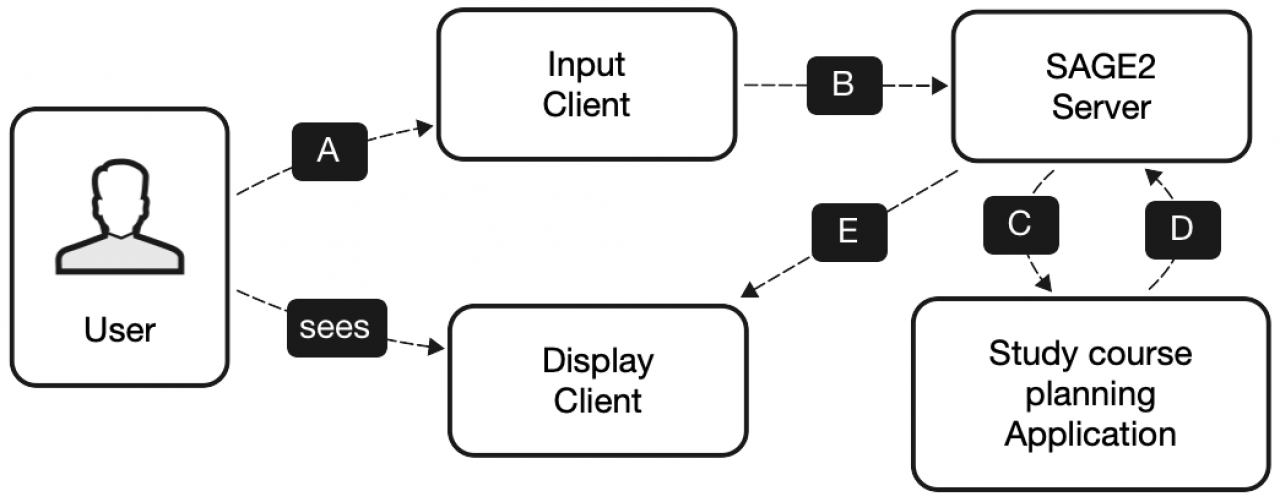|
|
||||||||||||||||||
Collaborative Project Planning Using Large Format Displays
Authors: Massari, Tommaso
Publication: Submitted in partial fulfillment of the requirements for the degree of Master of Science in Computer Science, Graduate College of the University of Illinois at Chicago Large format displays’ popularity is constantly increasing in universities and workplaces due to their prices showing a constant decrease over time. Many studies have demonstrated their benefits on several kind of tasks, from navigation of 3D environments to complicated tasks that require high cognitive load, and these studies have demonstrated how they can increase productivity and the quality of work in multi-user collaborative environments. I am studying the general problem of using large format displays in a multi-user collaborative environments with the specific problem of university study course planning. The traditional approach is represented by a regular whiteboard that will be compared with a project planning/scheduling software developed for large format displays. The purpose of this study is not only to confirm previous studies’ results that claim that the usage of large format displays in a multi-user collaborative environment can increase productivity and work quality, but also to evaluate and understand how their usage influences users’ cooperation and collaboration while performing a complex collaborative task. We will study how the subjects actually interact, and how different is their interaction, both with tools and other subjects, compared to the traditional approach. I developed an application for project planning that runs on SAGE2, an open-source middleware offering the possibility to exploit a large format display of any resolution and size. It also allows multiple users to control it at the same time, connecting to it with a regular web browser interface and a laptop, working in a shared environment. I will show four simple techniques to implement a general project planning application for large displays and I will show four different possible realizations using the same techniques, with a detailed overview on the one created for the user study. An innovative approach to collect data from the user study will be shown and explained in detail. Such approach improves and automatize the qualitative data analysis that must be conducted in similar studies. It includes space tracking of participants and automatic coding. Results show that the developed application is not missing any critical feature and it could be a good substitute of the traditional approach. Data suggests that collaboration behaviors could be influenced by such technology, and some slight differences on collaboration were found, but not enough to constitute statistical evidence. In a similar way, no statistical evidence was found about improvements in performance over classic whiteboard technology. Date: December 31, 2018 Document: View PDF |